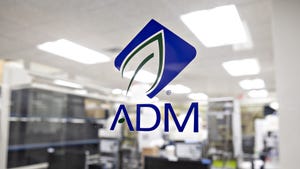Scale of fish farm emissions revealed
Global aquaculture found to generate around same amount of GHG emissions as sheep industry.
August 13, 2020

In the first study of its kind, researchers from Scotland’s Rural College (SRUC), the U.N. Food & Agriculture Organization Fisheries & Aquaculture Department, Cargill and WorldFish found that the fish farming sector generated 0.49% of anthropogenic greenhouse gas (GHG) emissions in 2017, or 263 million metric tons of carbon dioxide equivalents, an announcement from SRUC said.
The research, published by Nature.com, was carried out to raise awareness of how and why GHG emissions may arise in aquaculture supply chains, SRUC said.
It found that while GHGs in aquaculture vary by system, the emissions from feed production are generally greatest, although some production systems, such as shrimp, also use a lot of energy for pumping water.
SRUC climate change researcher Dr. Michael MacLeod, who led the research, said, “Global aquaculture makes an important contribution to food security and is also a driver of economic development. To enable sustainable expansion of aquaculture, we need to understand its contribution to global greenhouse gas emissions and how it can be mitigated.
“While the emissions from fish farming are unlikely to reach the levels of, for example, beef farming, it is important for the industry to consider ways to reduce emissions, which can also improve financial performance," he said.
“There are lots of ways to reduce emissions, including developing genetically improved breeds suitable for lower feed conversion rates, improving health, using more precise feeding methods and improving on-farm energy efficiency. Feed is the main source of emissions in most systems, so some of the reduction can be achieved before we even get to the fish farm -- in the production of feed materials,” MacLeod said.
In the paper, the researchers suggested that the modest emissions reflect a lesser emission intensity in the production of aquatic animals compared to terrestrial livestock (particularly cattle, sheep and goats), which is largely due to the absence of enteric methane in aquaculture.
They also noted that their analysis was limited in that feed composition in aquaculture is constantly changing as nutritional knowledge and application develop in response to commercial demand.
You May Also Like



